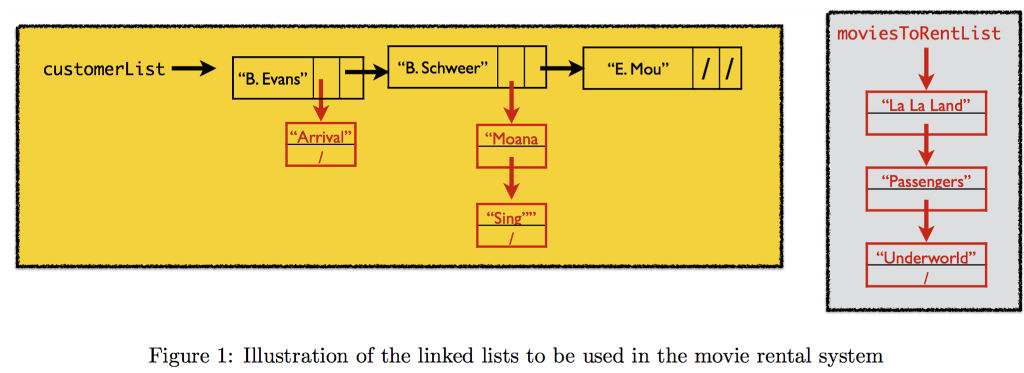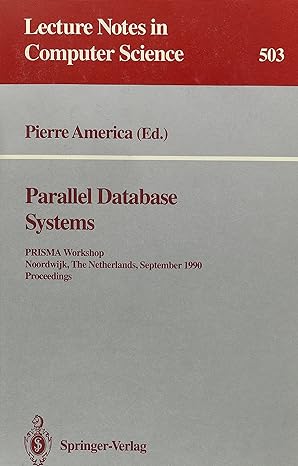Question
C++ The movie rental system you developed in HW1 relied on arrays. Hence, the system had limited flexibility in adding/deleting new movies or adding/deleting customers
C++
The movie rental system you developed in HW1 relied on arrays. Hence, the system had limited flexibility in adding/deleting new movies or adding/deleting customers from the executable. You will be re-designing the system using linked lists so that movies or users can be added or deleted during run time. Additionally, the new program must allow a customer to rent any number of movies.
You need to modify the array based implementation to an implementation based on two linked lists as shown below. The customers are stored in a nested linked list called as customerList. Each customer has a movieList, where the movies rented by him/her are stored. The movie catalog is another linked list termed as moviesToRentList. All lists are maintained in the alphabetical order of the names. You need to implement the functions to manipulate the linked lists as well as routines to add and delete nodes in the linked list.
The system menu has eight options: 1. Status.2. Return Movie.3. Rent Movie.
4. Add User.5. Delete User. 6. Add Movie. 7. Delete Movie. 8. Exit.
If option 1 (Status) is selected, the program will print three sections: (1) customers names and the movies rented by them (if any) in alphabetical order, (2) the total number of movies that are currently in circulation, (3) the catalog movies available for checkout (i.e. only the movies that are not currently rented by another user).
If option 2 (Return Movie) is selected, the program will print the list of registered customers and request the customer number. Once the customer is selected the movie is returned to the store and will be made available to rent by another customer.
If option 3 (Rent Movie) is selected, the program will ask to identify the customer from the list of registered customers. Once the customer is selected, the system will present the list of available movies to rent and ask to select one of them. Once the movie is selected, the system marks the movie to be rented to the customer and removes it from the available list of rentals and returns to the main menu.
If option 4 (Add User) is selected, the program will ask the user name. A new user with the specified name will then be added to the list of users.
If option 5 (Delete User) is selected, the system will ask the user to identify the customer from the list of registered customers. Once the customer is selected, the system will return all the movies rented by the customer (if any) to the list of movies available for rent and delete the customer.
If option 6 (Add Movie) is selected, the program will request the name of the movie to be added. A new movie with the specified name will then be added to the catalog.
If option 7 (Delete User) is selected, the system will ask the user to identify the movie from the available rentals; the movies that are with customers cannot be deleted. Once the movie is selected, the system will delete it from the catalog.
If option 8 (Exit) is selected, the system deletes all the dynamic memory that is allocated and terminate the program. 


Step by Step Solution
There are 3 Steps involved in it
Step: 1

Get Instant Access to Expert-Tailored Solutions
See step-by-step solutions with expert insights and AI powered tools for academic success
Step: 2

Step: 3

Ace Your Homework with AI
Get the answers you need in no time with our AI-driven, step-by-step assistance
Get Started


